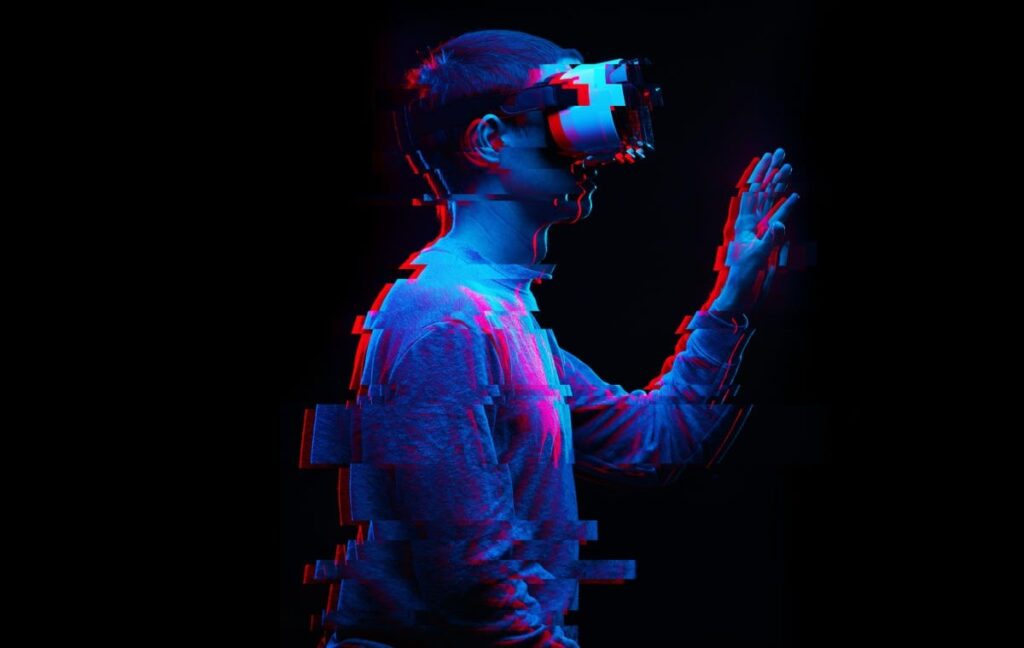As the profit margin that traditional technology paradigms can open up continues to compress, new and attractive things can quickly become a new chance, such as the boom of the metaverse concept.
However, over the past period of time, several metaverse social apps have experienced a firestorm and then quickly cooled down, throwing cold water on the application of the metaverse concept of socializing. The reason is simple: if providing a few sets of virtual images, providing some 3D scene elements, and allowing people to socialize with virtual identities is metaverse, then metaverse is too “cheap”. The key thing at this stage is to build a good entrance to the metaverse, not only to ensure immersion but also to provide people with a real experience in the virtual world. Therefore, strengthening XR technology has become the task of major technology companies as soon as possible.
What is XR?
XR is a term that is short for Extended Reality, which not many people know at the moment. Extended reality is a combination of real and virtual, human-computer interactive environments generated through computer technology and wearable devices. Extended reality includes augmented reality (AR), virtual reality (VR), mixed reality (MR), and many other forms. In other words, to avoid conceptual confusion, XR is actually an umbrella term that includes AR, VR, MR. XR is divided into multiple levels, ranging from virtual worlds with limited sensor input to fully immersive virtual worlds.
Factors that accelerate the progress of technologies related to extended reality devices
- XR is currently the most viable path for combining virtual and reality.
In a way, the metaverse even represents the future way of life – people are in the real world and the virtual world at the same time, and almost any life experience in the real world can be realized in the virtual world.
Virtual reality is the key feature, embodied in six core elements, including immersion, virtual identity, digital assets, real experience, virtual-real interconnection, and a complete social system.
Deloitte mentioned in a research report that in the future, the metaverse will develop from real to virtual on the one hand, to realize the digitalization of real experiences, and from virtual to real on the other hand, to realize the authenticity of digital experiences.
XR, on the other hand, is the visible path that we can achieve at the moment, combining virtual and reality.
We see that both VR and AR or VR have practical applications in real life. For example, you can watch a product in 360 degrees through AR at the Apple Store, and you can see what a house looks like in its entirety through VR immersion on the Self-Realization App.
- XR hardware is widely considered to be the hardware portal of the meta-universe era.
In the vision of the future, VR will be able to import the real world into the virtual world. For example, headset devices could be equipped with sensors capable of reconstructing real-world models in real time and decorating, modifying, enhancing, and sharing them.
For example, the current VR viewing is just “look”, but in the future, when you wear a VR headset or glasses and other devices, it is possible that you can not only look, but also enter that virtual space to make adjustments to the room furnishings, and may even lie in bed to experience.
AR, on the other hand, can integrate the virtual world into the real world, and some of the realistic scenarios that are needed now may no longer be needed.
For example, through AR glasses or other, schools may be able to complete teaching in the virtual space, and the physical concept of the office, in reality, may no longer be needed.
As Michael Abrash, author of the book “Inventing the Future” and chief scientist at Oculus, says, “Human-centered computing can only really reach its full potential when we live in a world where the virtual and the real are intertwined, rather than say interacting with the virtual world through a flat port, which is the whole point of AR and VR. “
- XR is likely to be the next generation of computing platforms.
Zuckerberg believes that XR is the next generation of computing platform, and will take XR as the key to Facebook’s strategy for the next 10 years, and will continue to invest in it for a long time.
For this judgment, XR is called the next-generation computing platform not only because XR can bring a whole new world, but it is also the set of key technologies in the computing era.
Tech giants are joining the competition as XR is gradually taking shape
In 2021, Zuckerberg officially renamed Facebook Meta, turning his attention to the emerging computing platform based on virtual reality and running full steam ahead into the metaverse through the development of XR and other software and hardware and related ecology. Oculus has become an indispensable revenue pillar for Meta in the metaverse layout. Meta-universe, as an important strategic direction for Meta’s future, will continue to invest.
Google announced its cloud XR streaming service: Immersive Stream for XR (preview version) at I/O 2022. It is reported that the service is based on Google Cloud architecture and can run AR/VR content in the browser on any device, featuring smooth-running high-fidelity 3D content. And recently, Google announced that it is developing OpenXR client in order to accelerate the layout of metaverse, and is expected to introduce XR streaming function in AR/VR headsets soon.
WiMi Hologram Cloud (NASDAQ:WIMI), the first share of metaverse holographic AR, has been laying out the R&D and application of XR technology since long ago, and has accumulated and precipitated many years of technology in both XR. Previously, WiMi established the Metaverse Division to invest in creating a unique immersive XR experience and the development of related core AR and AI technologies to connect the real and digital worlds and help open the next-generation Internet platform. In addition, WiMi has created a comprehensive IP rights content library with nearly 5,000 XR virtual IP rights content, covering a wide range of content, including animation, virtual live streaming, virtual idols, and virtual social. Specifically, 2,961 XR IPs are used for virtual education, 851 XR IPs are used for virtual travel, 739 IPs are used for virtual arts and entertainment, and 103 IPs are used for virtual science.
More notably, the arrival of the 5G era has once again energized the development of the XR industry. The stable and high-speed 5G network has enabled XR technology and equipment to be greatly enhanced. In the first year of 5G commercialization, WiMi realized the integration of 5G+XR, positioning high-end, comprehensive experience and breakthrough limits. Under the comprehensive empowerment of 5G technology, the enterprise XR application expands to more fields, bringing new development opportunities for enterprises and creating a more exciting new world of the future for users. The metaverse concept that has recently exploded is also based on XR as the entry point. WiMi presents a new era of three-dimensional Internet sub epoch through XR technology and 5G as the backbone.
Ending
To put it simply, building a complete XR ecology requires both hardware as support and software technology, as well as rich content, and enough applications. On this basis, we see that the most successful technology companies in the past in the mobile Internet era have more ready-made advantages when cutting into the XR field as well as the meta-universe, including technical precipitation, capital barriers, user operation, industry experience, and so on. At present, more and more tech majors have established their own basic ecology in hardware, software, applications, and content by virtue of self-research and investment in mergers and acquisitions.




































